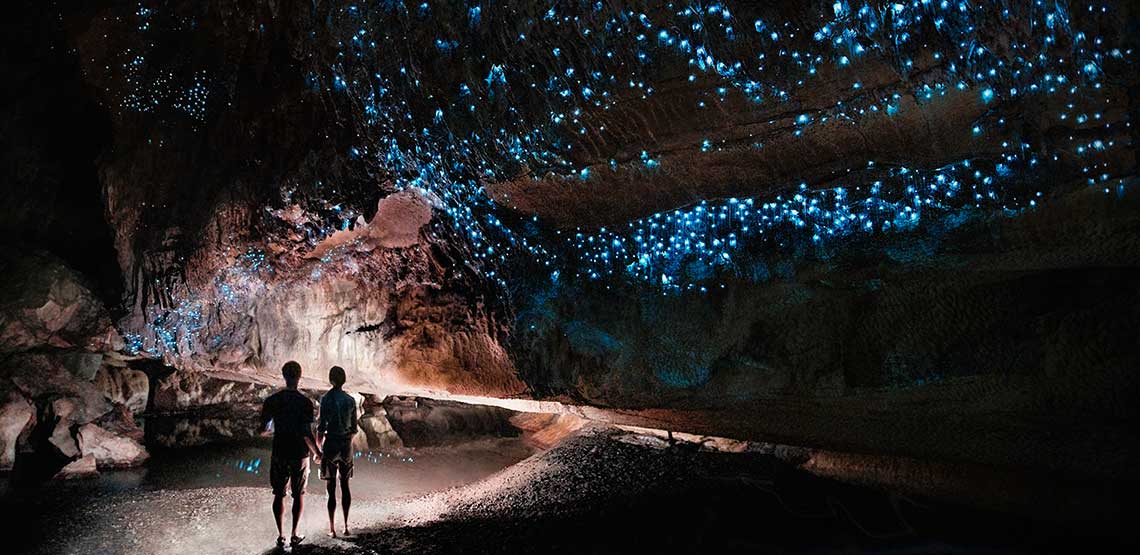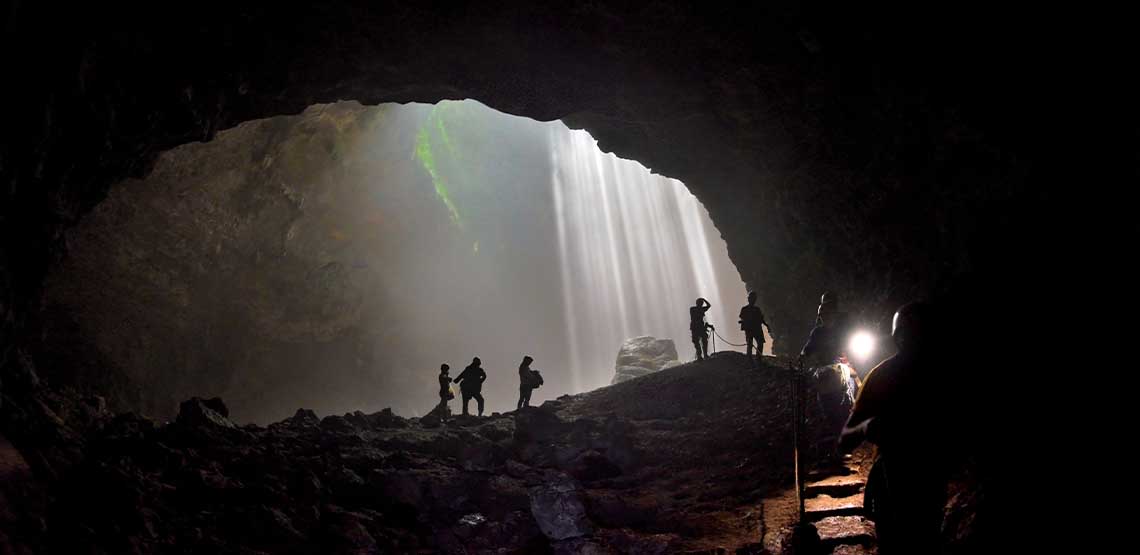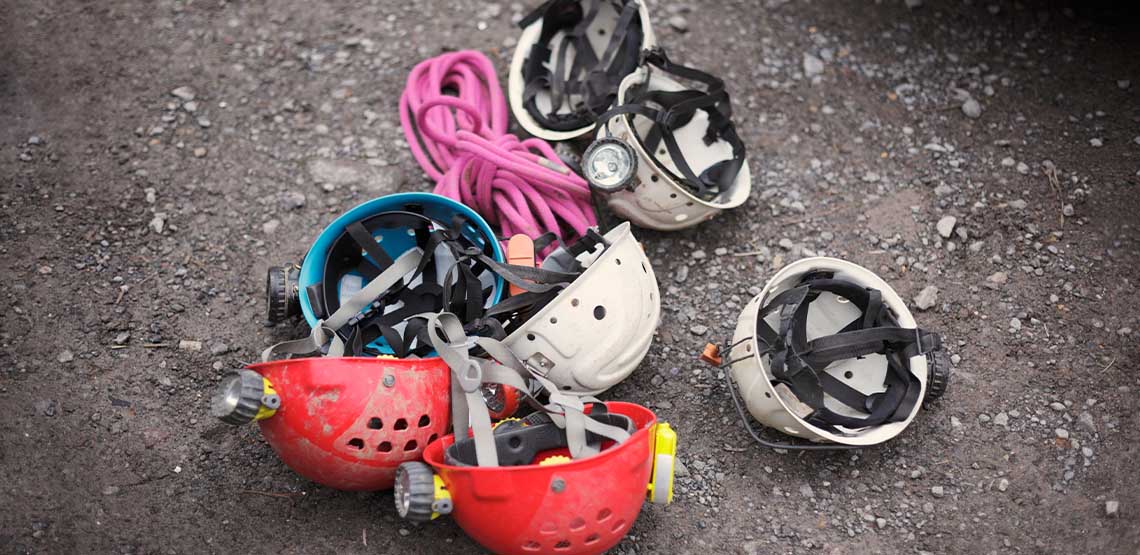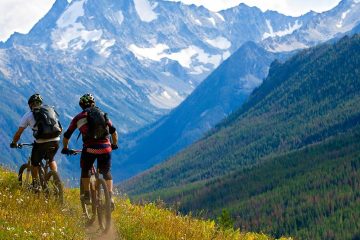Add Spelunking to Your Next Travel Itinerary
Discovering the Wonders Below the Earth’s Surface
Sunny beaches. Spectacular cities. Amazing cuisine. Soaring mountains. Destination vacations focus on all sorts of diverse draws, but there’s one kind of attraction that often gets ignored: caves. It’s easy to see why. Most of us don’t think about caverns and grottoes until something like the 2018 Tham Luang cave rescue claims headline space. They’re damp, dirty, drafty, and dangerous, right?
Well, sometimes. But spelunking or caving (more on the differences between the two terms in the next section!) allows you to access some of the world’s most breathtaking wonders. What’s more, they’re also located in both exotic and mundane places, allowing you to plan just the sort of trip you’d like.
What is Spelunking?
Most people believe that the term ‘spelunking’ is synonymous with caving, simply meaning “exploring underground,” and they’re right, kind of. But while the words may share the same dictionary definition, they mean very different things to aficionados of the subterranean sport. To them, ‘caving’ denotes serious exploration of caverns, some of which may include ropes and climbing and similarly strenuous activities. They also tend to look with disapproval on ‘spelunking,’ seeing it as the mark of amateurish explorations. Some devotees even consider spelunking a slur.
Rather than quibbling about terms, though, the best way to figure out what spelunking is all about involves analyzing a specific tour or run in a specific cave. One route may include nothing more strenuous than a short stroll that doesn’t even dirty your feet. Another might have you stooping low or even crawling through constricted corridors. Yet another might feature you dangling from a rope hundreds of feet above a rocky floor.
You get the idea: spelunking (and caving!) can include a wide range of activities that vary in difficulty and strenuousness. Before descending into the deep, you should consider your own personal fitness and comfort level. Then you should select a cavern that meets both.
Dos, Don’ts, and Safety Tips
While caving doesn’t seem as dangerous as extreme sports such as skydiving, kite surfing, free solo climbing, or BASE jumping, it still carries risks.
Outside published a report about medical student John Jones who attempted to explore Utah’s Nutty Putty cave in 2009. Though Nutty Putty was considered a beginner’s cave, Jones became stuck at a narrow section and ended up stranded upside down for more than a day as rescuers struggled to save him. He passed away due to circulatory issues.
Jones’ heartbreaking tale highlights a troubling truth: Even seemingly ‘safe’ activities can prove fatal. Fortunately, there are a number of ‘dos’ and ‘don’ts’ you can follow in order to stay safe.
Be sure to avoid the following:
- Don’t go alone: This tip might sound obvious, but it has multiple layers. While no one should enter a cave alone, many neophytes think that simply gathering a few friends should suffice. True, having people around is always helps, especially when dealing with injury or exhaustion. But contracting with an experienced guide can help you avoid those problems entirely. Plan a tour, especially if you’re new to the sport.
- Don’t venture into random, uncharted caves: Adventurous types might think that striking out into unmapped caves sounds like a great thrill sport. Unfortunately, it’s also a great way to tumble down an unforeseen drop and end up grievously injured, or dead. Play it smart and stick with known caves.
- Don’t damage the cave, take souvenirs, or leave trash behind: Did you know some scientists estimate that stalactites grow only 10 centimeters every thousand years? Perhaps you weren’t aware, but I bet you know that there’s no janitorial service underneath the earth. Don’t take souvenirs or toss rubbish while spelunking.
Following these tips will help ensure your adventure is a success:
- Do pack proper gear: Having the right stuff can make the difference between a fun expedition and a miserable one. For moderately strenuous caving, consider bringing a hard hat, a headlamp, something to eat and drink, and a basic first aid kit. Oh, and pick up a map if you can.
- Do note the weather: Everyone who watched the Thailand caving disaster understands how sudden rainfall can cause dangerous flooding for unwary spelunkers. However, temperature matters, too. Caves normally stay only a few degrees below an area’s average annual temperature, but their climate (so to speak) can vary in unexpected ways. Wearing layers is wise.
- Do navigate the caves in the easiest possible way: You probably won’t have to worry about this tip if you’re on a guided tour that doesn’t involve anything more strenuous than strolling down a gently inclined slope. But if you find yourself in more challenging caves, always pick the safest route, even if it takes longer.
You don't have to go far to have incredibly thrilling experiences. Adventure travel USA is no joke, with everything from scuba diving to whitewater rafting.
Global Caving Destinations
If caving sounds like it’s up your proverbial alley, you’re in luck. You’ll find lots of options all over the world, and below you’ll find some of our suggestions for global caving excursions, some of which lie close to other great attractions.
- Carlsbad Caverns, New Mexico (120 miles from El Paso, Texas). One of the United States’ most famous caving destinations, this national park features more than 115 separate caves.
- Puerto Princesa Subterranean River National Park, Philippines (45 miles from Puerto Princesa, Mimaropa). A UNESCO World Heritage Site, this unique cave is only accessible via the Cabayugan River, which sluices through this limestone grotto.
- Thrihnukagigur, Iceland (21 miles from Reykjavik). The multi-hued core of this dormant volcano has been dubbed “one of the twenty places in the world you must see before you die” by CNN. A tour guide is required to visit.
- Gouffre Berger, France (30 miles from Grenoble, Isère). This cave in Southeastern France is accessible to a wide variety of skill levels, from neophytes to highly accomplished cavers and cave divers. Note that it’s prone to flooding.
- Mammoth Cave, Kentucky (25 miles to Bowling Green and 85 miles to Louisville). The world’s longest-known cave system and a UNESCO World Heritage Site and International Biosphere Reserve. Runs range from easy to highly challenging.
- Waipu Caves, New Zealand (18 miles to Whangarei, Northland Region, and 82 miles to Auckland). Muddy and trackless, this decidedly damp series of caverns eventually opens up into a glowworm-studded chamber that transforms the gnarled rock into a glimmering galactic expanse.
- Chiang Dao Cave, Thailand (46 miles to Wat Tham Chiang Dao). If you explore all five caves that make up this linked series, prepare yourself for some truly tough stretches. Open year round, even during the rainy season.
Should these options fail to scratch your spelunking itch and if you’re a North American resident, consider browsing the National Caves Association to find local caves. An amazing world of subterranean exploration awaits!









